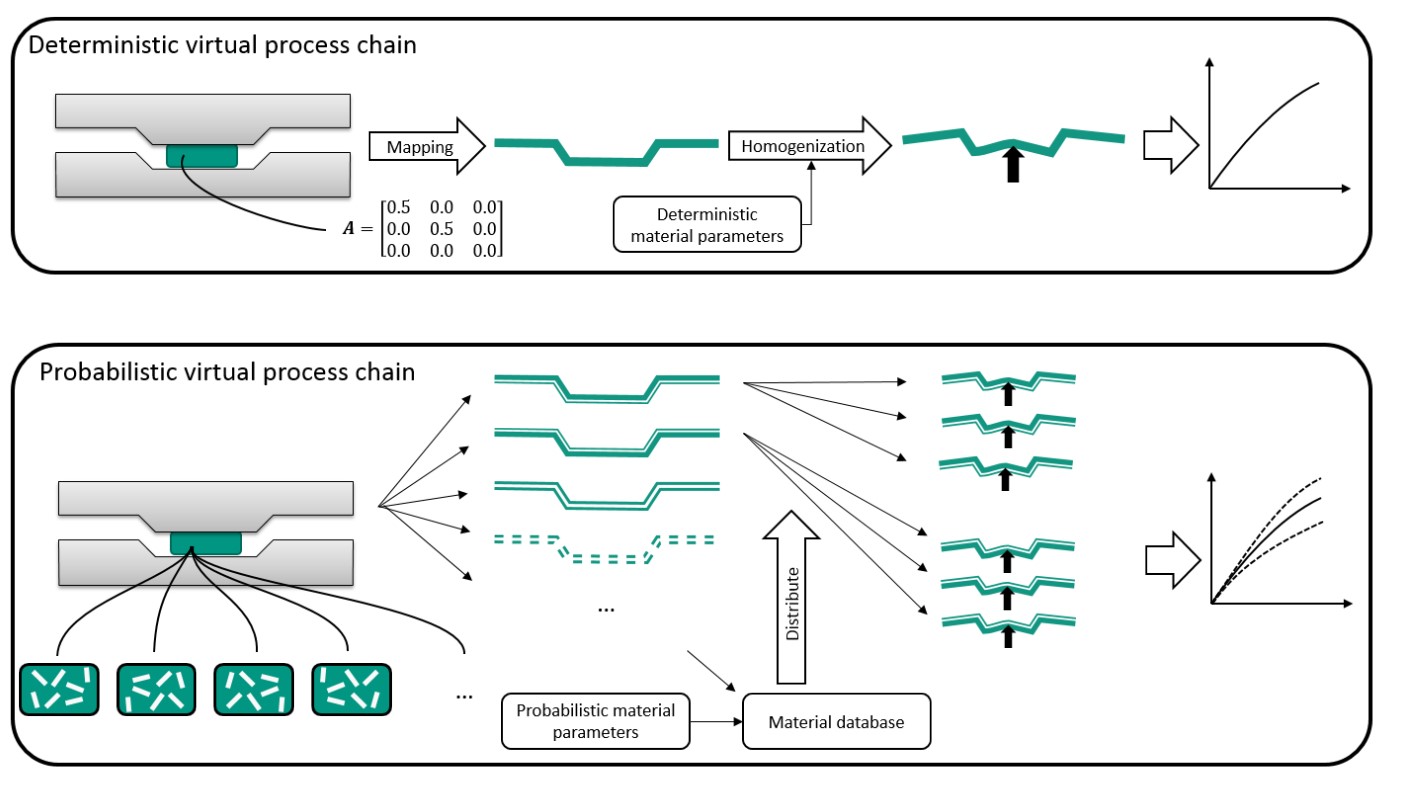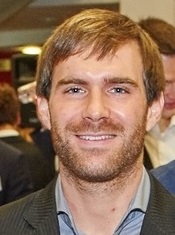Scientific Start-up: 2nd Generation - "Continuous probabilistic virtual process chain for process-induced uncertainties in CoDiCoFRP"
The manufacturing process of CoDiCoFRP components has a significant influence on the effective structural performance of a part due to local variations of microstructural properties such as fiber orientation, fiber volume fraction and possibly fiber length distribution. Thus, process simulations and structural simulations are coupled to transfer processing results for accurate predictions of the components behavior under structural loading.
However, the real processing effects are not deterministic, inter alia due to the high fiber length that is in the order of magnitude of small component features. Instead, the initial conditions are realizations of an uncertain process due to prepreg variances, handling and other process-induced scatter. This initial scatter is propagated throughout the manufacturing process and affects the microstructure evolution during molding as well as the effective properties of the molded component.
Typical simulation tools do not allow an evaluation of this scatter, as they describe the mold filling process based on fiber orientation distribution functions that represent the overall chances of finding fibers in certain directions, but do not allow the tracking and computation of individual realizations of the process. Additionally, many structural material models are formulated in an averaged or empirical manner and hence their ability to take local variations of microstructural properties into account is limited.
We developed multiscale simulation tools for the mold filling phase and subsequent mechanical damage evolution during loading in our IRTG doctoral projects D1 and S3. The process simulation allows the computation of a bundle architecture that forms during mold filling and depends on the initial bundle configuration. The structural simulation allows for a sensitivity analysis of the effective structural properties, as well as microscale full-field distributions of mechanical parameters (with focus on damage evolution), w. r. t. the scatter of the process-induced initial conditions.
Such a sensitivity analysis can be performed via Monte-Carlo approaches based on a coupled virtual process chain connecting the developed simulation tools. Hence, we can investigate different realizations, and enhance our previous deterministic virtual process chain [Görthofer et al., 2019] with a quantification of uncertainty and scatter, see Figure of below. Our objective is a prediction of this uncertainty with a probabilistic virtual process chain to ensure safe use of components without the need of global knock-down safety factors that reduce the light-weight potential of the considered fiber-reinforced plastics.

Figure: Visualization of a deterministic virtual process chain and the planned probabilistic virtual process chain. We generate multiple realizations of virtual parts from different initial fiber bundle configurations through mesoscale process simulation. Each of these virtual parts is modeled with distributed mechanical properties from the material database and probabilistic material parameters. The final evaluation of all the results or subsets allows a prediction of the scatter and can help to identify critical parameters that affect the part performance.
Görthofer, J., Meyer, N., Pallicity, T. D., Schöttl, L., Trauth, A., Schemmann, M., Hohberg, M., Pinter, P., Elsner, P., Henning, F., Hrymak, A., Seelig, T., Weidenmann, K., Kärger, L., Böhlke, T.:
Virtual process chain of sheet molding compound: development, validation and perspectives.
Composites Part B 169, 133-147 (2019)
DOI: 10.1016/j.compositesb.2019.04.001

